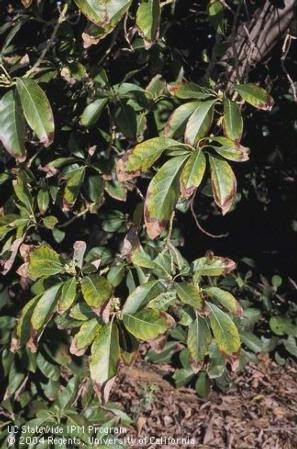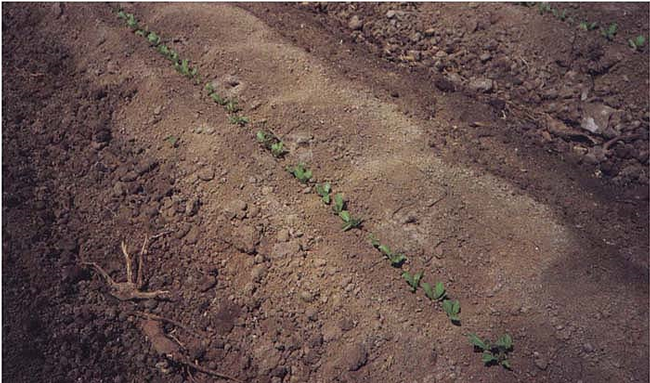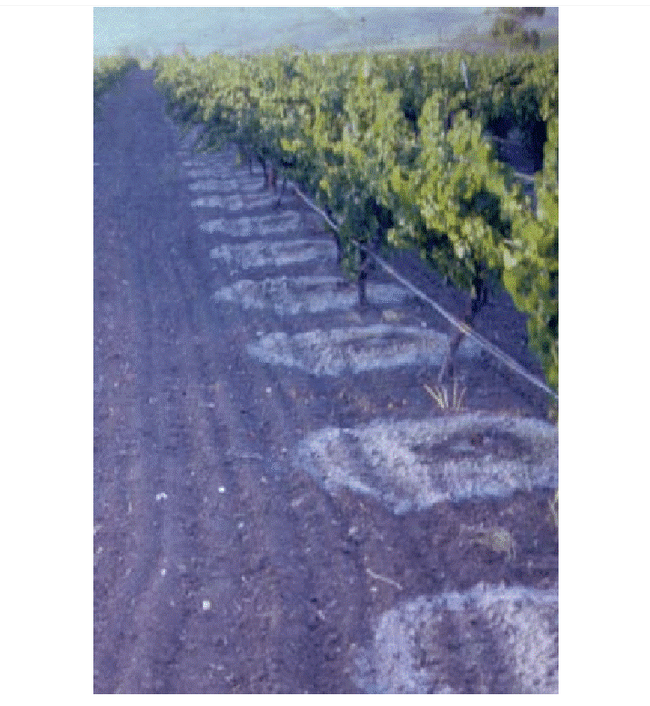
O NO, It's Raining
Thanks for the rains that leach the soils of accumulated salts and bring on new fresh growth. Or maybe not. When we apply irrigation water with salts which with few exceptions we do in irrigated agriculture, salts accumulate in the soil. They accumulate in a certain pattern depending on the type of irrigation and soil type. There's a strong tendency for drip and microsprinklers to form a pattern of salt accumulation near the margins of the wetted patterns. This pattern is stronger with drip because the source point is always pushing a front outward from the emission point. This pattern occurs with microsprinklers, as well, although not as strongly. These patterns continue to form and accumulate as long as there is no rainfall to evenly push the salt down below the root zone. The longer the period of no rain, the larger the salt concentration at the margin.
So the way water moves is generally down. It moves in a wetting front drawn by gravity. It moves laterally too, because of the attraction water has for the soil particles. It will move laterally more in a clay soil than in a sandy soil because there are more particles in a clay soil than a sand (actually more surfaces that hold water). It also carries salt with it. Wherever the water moves, the salt moves. The more rain, the more salt is moved down. The more rain, the deeper the salt is pushed.
The problem with rain, is that if there is not enough, the salt tends to move laterally. In this wet soil solution, the salt is moving from where it is concentrated, to where there is a lower one. And if there isn't enough rain to move that salt down, it just moves back along the salt gradient, back to where the water first came from…….towards the roots. And that salt may be at such a high concentration that it can cause plant damage.
We talk about effective rainfall. This is usually about a quarter of an inch of rain. This is the amount of water to do more than just wet the dust, it's the amount to move water into the root zone. It is also moving salts into the root zone which can be a real problem. A good rain will do more than wet the dust, it will also move the salts out of harm's way in the root zone. The amount of rain necessary to do this is going to depend on the salt accumulated and the soil texture. The more salt, the more rain needed. The finer the texture, the more rain.
So there is no good cookbook, other than you need enough. And the first rains of the year, watch out. This is often when there is the highest salt accumulation and in the fall when we have the most irregular rains. Small rain amounts that can move salt into the root zone. A rule of thumb is a minimum of a good one inch rain event or combined rain events of two inches in a short period is needed to dissolve and move the salts out of the avocado root zone's top 18 inches. The more the better.
If there is not enough rain……………The solution !!!!!!!! Run the irrigation system to make sure there is enough to move that salt down.
Get ready to irrigate with the first rains if they are insufficient for adequate leaching.
Also get ready for the first smell of rain - petrichor.
Petrichor (/'p?tr?k??r/) is the earthy scent produced when rain falls on dry soil. The word is constructed from Greek petra (π?τρα), meaning "stone", and ichor (?χ?ρ), the fluid that flows in the veins of the gods in Greek mythology.
The term was coined in 1964 by two Australian CSIRO researchers, Isabel Joy Bear and Richard G. Thomas, for an article in the journal Nature.[1][2] In the article, the authors describe how the smell derives from an oil exuded by certain plants during dry periods, whereupon it is absorbed by clay-based soils and rocks. During rain, the oil is released into the air along with another compound, geosmin, a metabolic by-product of certain actinobacteria, which is emitted by wet soil, producing the distinctive scent; ozone may also be present if there is lightning.[3] In a follow-up paper, Bear and Thomas (1965) showed that the oil retards seed germination and early plant growth.[4]
In 2015, scientists from the Massachusetts Institute of Technology (MIT) used high-speed cameras to record how the scent moves into the air.[5] The tests involved approximately 600 experiments on 28 different surfaces, including engineered materials and soil samples.[6] When a raindrop lands on a porous surface, air from the pores forms small bubbles, which float to the surface and release aerosols.[5] Such aerosols carry the scent, as well as bacteria and viruses from the soil.[5] Raindrops that move at a slower rate tend to produce more aerosols; this serves as an explanation for why the petrichor is more common after light rains.[5]
The human nose is extremely sensitive to geosmin and is able to detect it at concentrations as low as 5 parts per trillion.[7] Some scientists believe that humans appreciate the rain scent because ancestors may have relied on rainy weather for survival.
https://en.wikipedia.org/wiki/Petrichor

avocado salt damage

salt pattern

salt rings
